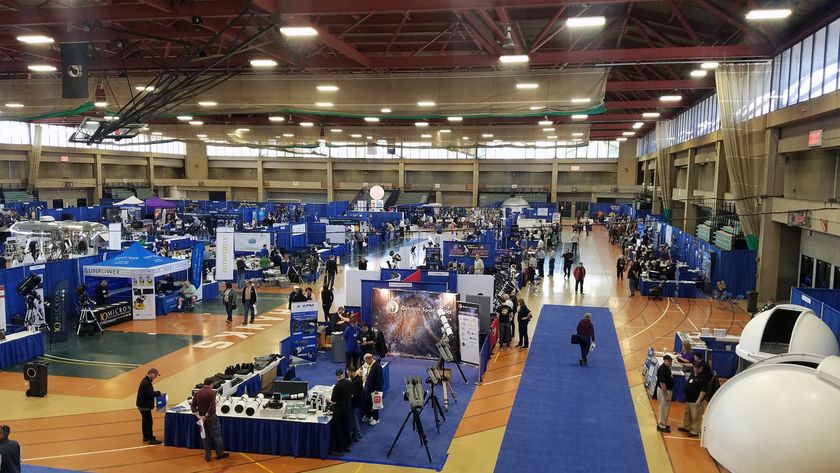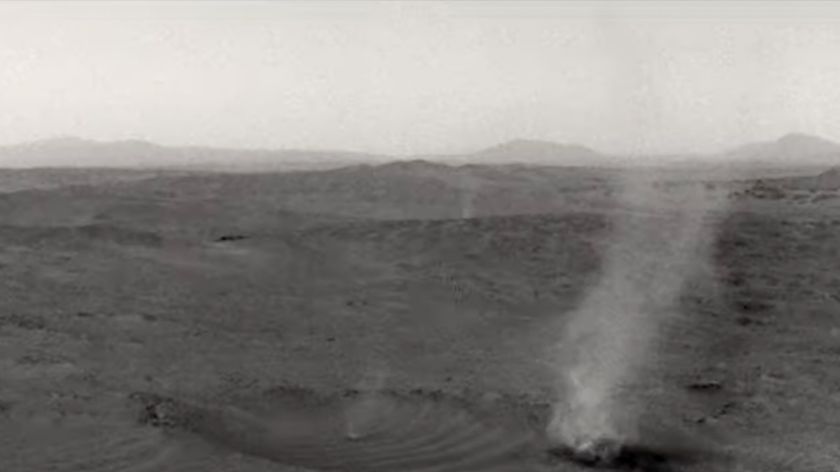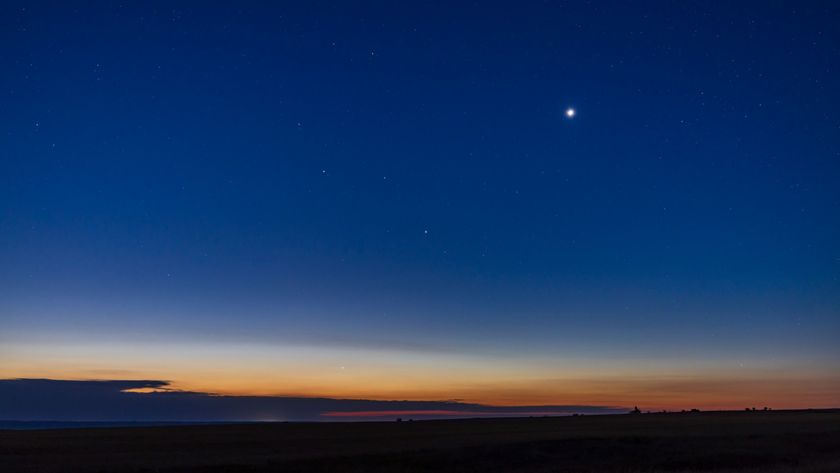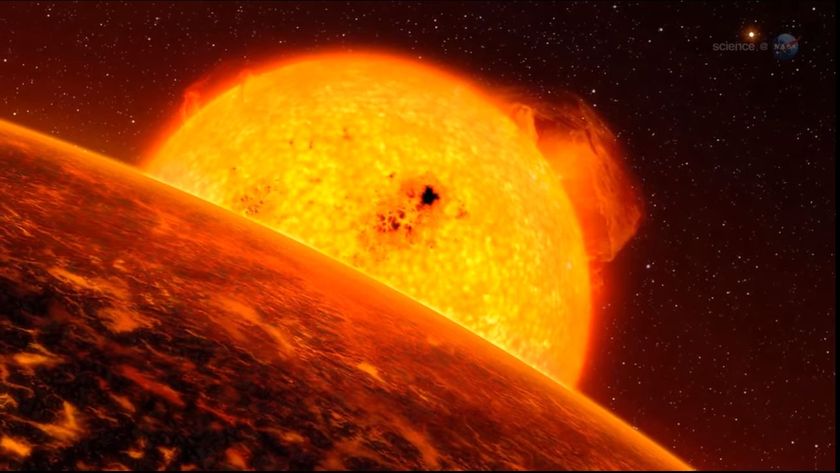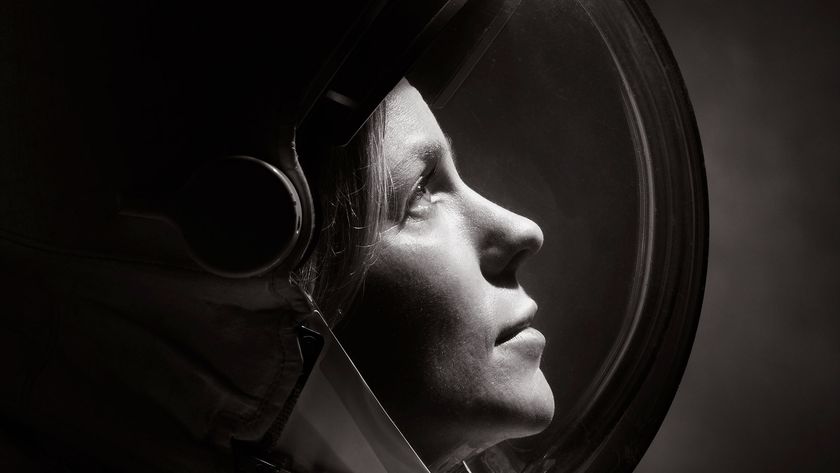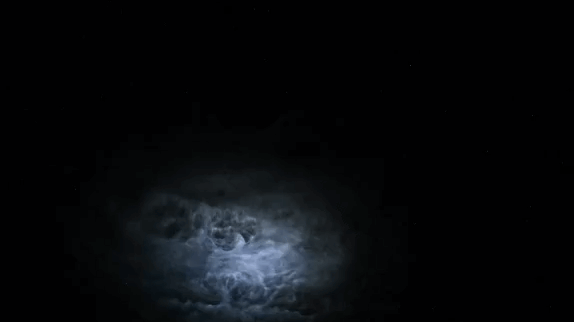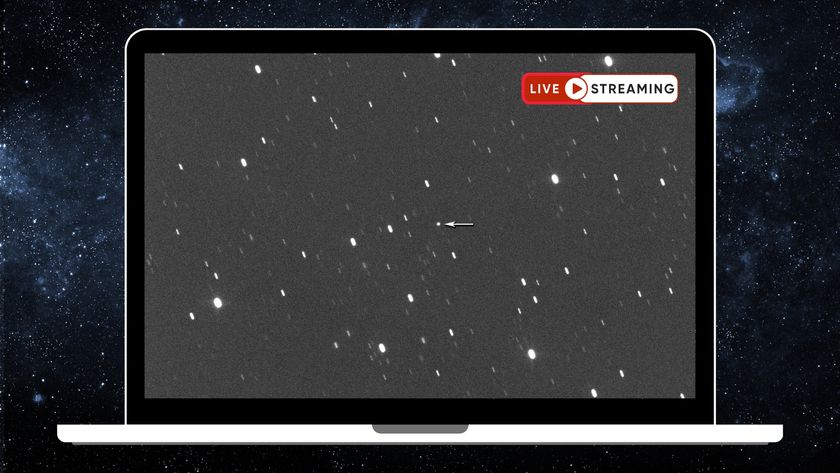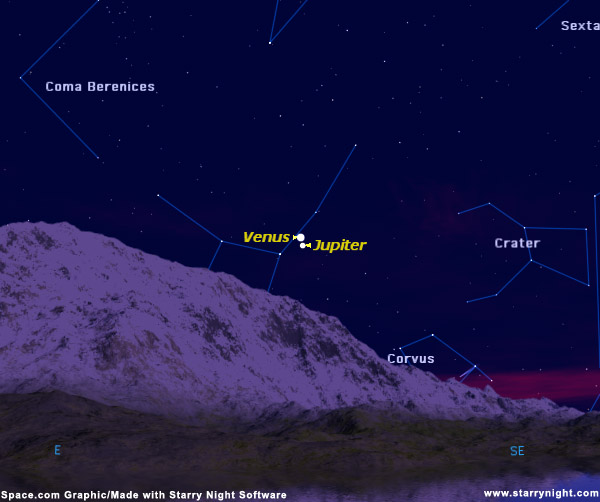
The first week of November will be an exceptional time for predawn skywatchers with a beautiful gathering of the two brightest planets, and the waning crescent Moon will later drop by to join them.
Venus and Jupiter will appear closest together on the mornings of Nov. 4 and 5.
The moment of closest approach will actually come during the early evening hours of Nov. 4, unfortunately when this dynamic duo is below the horizon for North America. They'll be separated by just over ?-degree, roughly the apparent width of the Moon (the width of your fist, held at arm's length roughly corresponds to 10 degrees).
Generally speaking, at least for the immediate future, conjunctions between Venus and Jupiter will come in pairs. The first conjunction takes place in the morning sky, usually followed about 10 months later by another in the evening sky.
Then 2? years later, Venus and Jupiter are again in conjunction, again in the morning sky.
When Venus and Jupiter next get together, it will be in the evening sky late next summer, at the beginning of the Labor Day holiday weekend.
Future Venus-Jupiter conjunctions
Get the Space.com Newsletter
Breaking space news, the latest updates on rocket launches, skywatching events and more!
The table below shows future Venus-Jupiter pairings in the coming decade.
| Date | Visible in | Separation |
Nov. 4, 2004 | Morning Sky | 0.6-degrees |
Sep. 2, 2005 | Evening Sky | 1.4-degrees |
Feb. 1, 2008 | Morning Sky | 0.6-degrees |
Dec. 1, 2008 | Evening Sky | 2.0-degrees |
May 11, 2011 | Morning Sky | 0.6-degrees |
March 15, 2012 | Evening Sky | 3.3-degrees |
- Full Moon Fever
- Astrophotography 101
- Sky Calendar & Moon Phases
- 10 Steps to Rewarding Stargazing
- Understanding the Ecliptic and the Zodiac
- False Dawn: All about the Zodiacal Light
- Reading Weather in the Sun, Moon and Stars
- How and Why the Night Sky Changes with the Seasons
- Night Sky Main Page: More Skywatching News & Features

Starry Night software brings the universe to your desktop. Map the sky from your location, or just sit back and let the cosmos come to you.

Joe Rao serves as an instructor and guest lecturer at New York's Hayden Planetarium. He writes about astronomy for The New York Times and other publications, and he is also an on-camera meteorologist for News 12 Westchester, New York.
Join our Space Forums to keep talking space on the latest missions, night sky and more! And if you have a news tip, correction or comment, let us know at: community@space.com.

Joe Rao is Space.com's skywatching columnist, as well as a veteran meteorologist and eclipse chaser who also serves as an instructor and guest lecturer at New York's Hayden Planetarium. He writes about astronomy for Natural History magazine, Sky & Telescope and other publications. Joe is an 8-time Emmy-nominated meteorologist who served the Putnam Valley region of New York for over 21 years. You can find him on Twitter and YouTube tracking lunar and solar eclipses, meteor showers and more. To find out Joe's latest project, visit him on Twitter.
